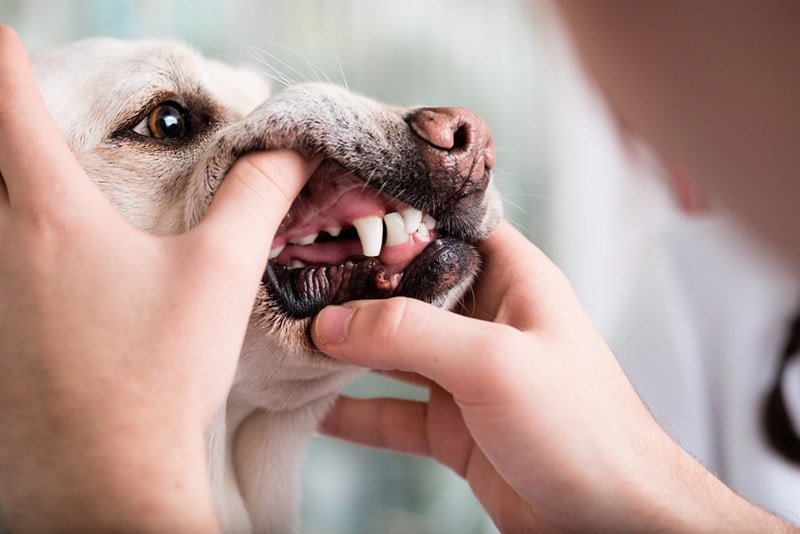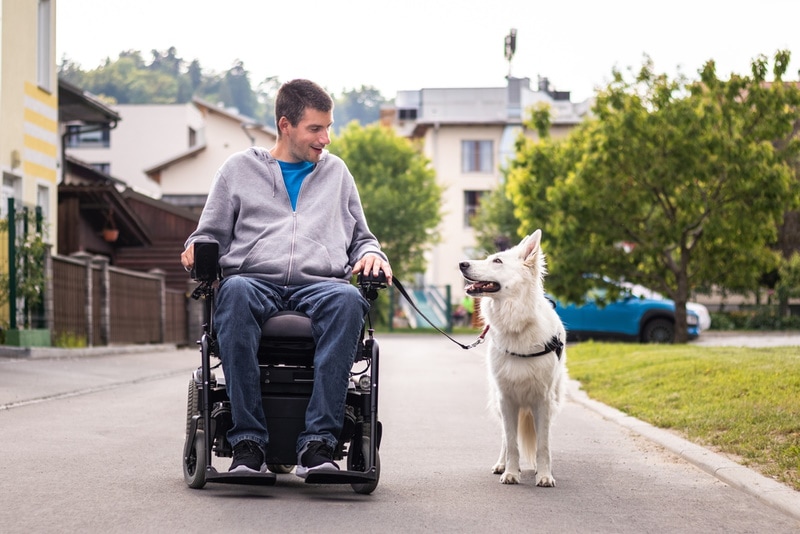When Do Goldendoodles Go Into Heat? Vet-Reviewed Facts

Updated on
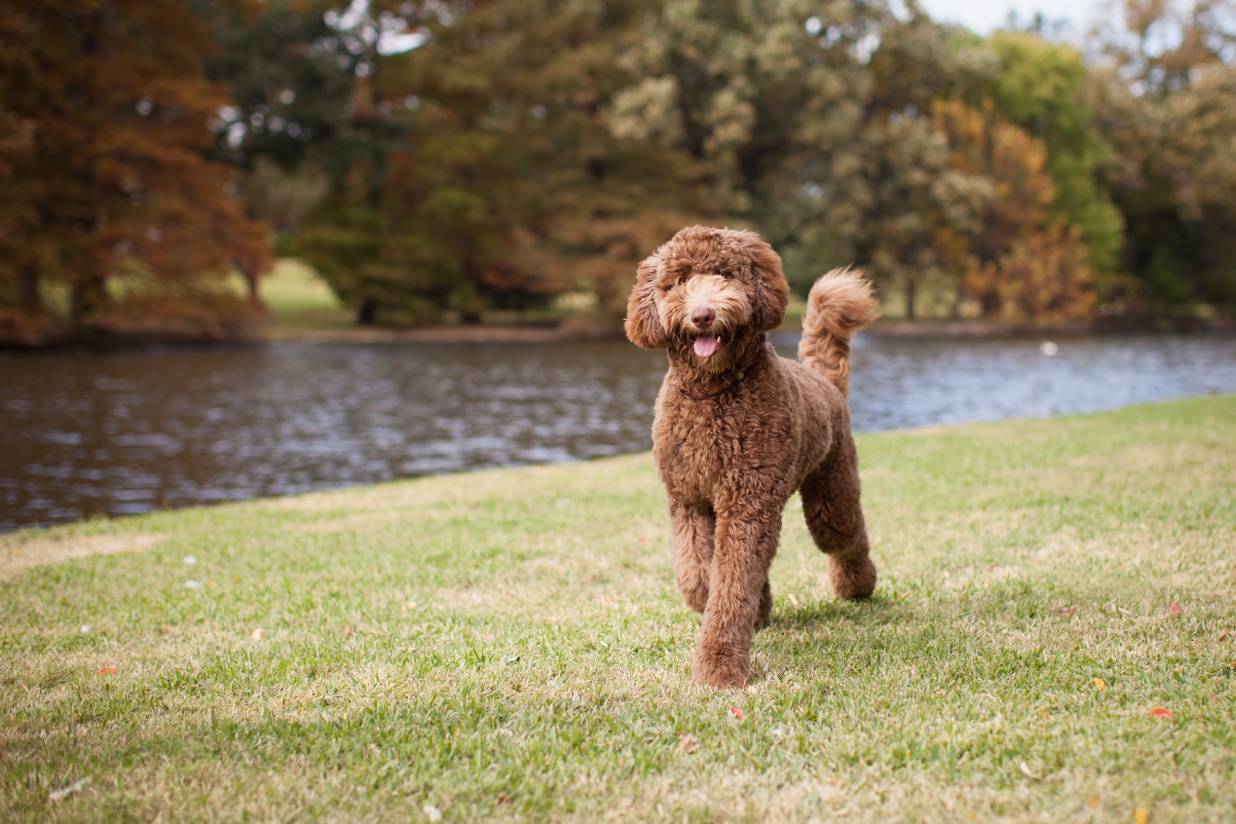
Click to Skip Ahead
Undeniably, a part of raising a Goldendoodle involves understanding its reproductive cycle. Female Goldendoodles typically experience their first heat cycle somewhere between six months to a year old. However, the timing can vary depending on their overall health, size, and individual genetic factors.
Recognizing when your Goldendoodle is in heat is crucial for their health and safety, as well as for preventing unwanted pregnancies. This article will provide valuable insights into the heat cycle of Goldendoodles, how to care for them during this period, and tips for ensuring their well-being.
Understanding the Canine Heat Cycle
To appreciate the entire process, it’s important to recognize what goes on during the canine heat cycle. It has four distinct stages—proestrus, estrous, diestrus, and anestrus. Each stage has unique behavioral and physical changes.
Recognizing these signs can help pet parents better support their furry friends during this biological event, so let’s go over each one.
- Proestrus Stage – This first stage lasts approximately nine to 10 days. In this stage, Goldendoodles might appear more anxious or clingy. Physically, pet parents may notice licking of the genitals, swelling of the vulva, and a bloody discharge.
- Estrous Stage – Following the proestrus stage, the estrous stage usually lasts 9 days but can vary between three to 21 days. This is the period when the female is receptive to mating. Signs still include a vaginal discharge, which may change to a straw color. Your dog can become aggressive towards other females.
- Diestrus Stage – The diestrus stage signals the end of the heat cycle. The discharge will cease, and your Goldendoodle will no longer be interested in mating. This stage typically lasts around 60 days.
-
Anestrus Stage – This is the dormant period when no sexual activity takes place. It can last between 2 and 5 months but typically lasts around 3 months, after which the cycle starts anew.
Understanding each stage will ensure you’re better prepared when your Goldendoodle goes into heat. Next, let’s examine some of the signs and what to look for.

The 4 Signs Your Goldendoodle Is in Heat
Recognizing the signs that signal your Goldendoodle is in heat can help manage her care effectively and ensure her comfort during this natural process. Observing your furry friend’s behavior and understanding the changes can give you valuable insight. Here are some of the key signs to look out for:
1. Behavioral Changes
One of the first indicators may be a shift in your Goldendoodle’s behavior. She might become more affectionate, restless, or irritable. An increased amount of licking or grooming of her genital area can also be a sign that she is in heat.
2. Increased Urination
Increased frequency of urination is a common sign of a dog in heat. This behavior is linked to your Goldendoodle’s natural instinct to signal her availability to potential mates. So if you notice your pet taking extra trips to her usual spot, this might be an indication of her entering the heat cycle.
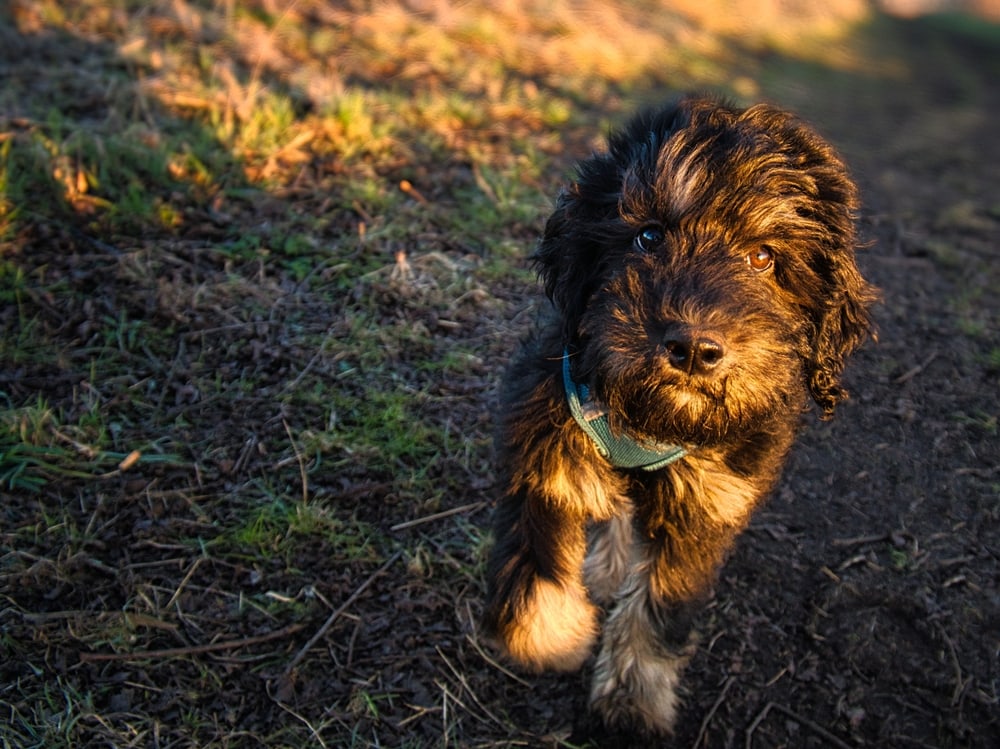
3. Physical Changes
A swollen vulva is often one of the most noticeable physical signs of a dog in heat. This change, coupled with a bloody or straw-colored discharge, is a telltale sign that your Goldendoodle is in the heat phase. Your dog’s mammary glands may look enlarged or swollen during the first stages of her heat cycle, this is normal and should not cause alarm.
However, keep in mind that not all dogs exhibit this symptom prominently, so it might be less obvious in some Goldendoodles.
4. Attention From Male Dogs
If male dogs suddenly become more interested in your Goldendoodle, it could be a sign she is in heat. Pheromones released during this period can attract male dogs even from a distance, hence their heightened interest.
Understanding these signs can help you better anticipate and manage your Goldendoodle’s heat cycle. It’s important to remember that each dog is unique, and the signs can vary in intensity. If you are uncertain or have any concerns, it’s always advisable to seek advice from a trusted vet.
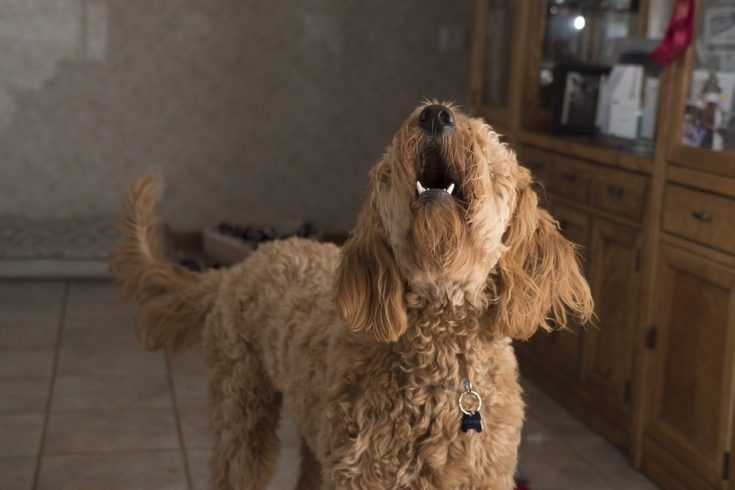
The 4 Tips for Caring for a Goldendoodle in Heat
Caring for a Goldendoodle in heat requires attention and understanding. Providing a safe and comfortable environment is crucial. Keep them on a leash during walks to prevent unwanted encounters with male dogs.
Also, make sure to maintain their hygiene by providing pet-friendly wipes or doggy diapers to manage the discharge.
1. Regular Vet Check-ups
Just like human health check-ups, regular vet visits are crucial for maintaining your Goldendoodle’s health. It’s especially important if your female is intact. Regular health checks will ensure that your dog is developing normally and can help detect any potential health issues early on.
2. Feeding and Exercise
Ensuring a balanced diet and regular exercise is equally essential during the heat cycle. Nutritious meals can support their body during this period, while regular exercise can help keep them active and distracted from any discomfort.

3. Safety Precautions
One must also keep in mind safety precautions during this time. Keeping your Goldendoodle safe means monitoring them closely when outside and avoiding dog parks or busy areas to prevent unintended mating. Never let your dog off her leash when she is in heat. During this time, she will not only attract males, but she will actively try to find one.
4. Spaying Your Goldendoodle
Finally, if you do not plan on breeding your Goldendoodle, consider spaying. Spaying not only prevents unwanted pregnancies but also significantly reduces the risk of certain health issues, such as mammary cancer and pyometra.

Wrap Up
Raising a Goldendoodle can be a rewarding experience filled with love, laughter, and lots of fun memories. Understanding their heat cycle is an essential part of ensuring their health and well-being.
Armed with this knowledge, you can provide the best care possible for your furry companion. Remember, the journey is as much about learning as it is about companionship.
Featured Image Credit: The Dog Photographer, Shutterstock



